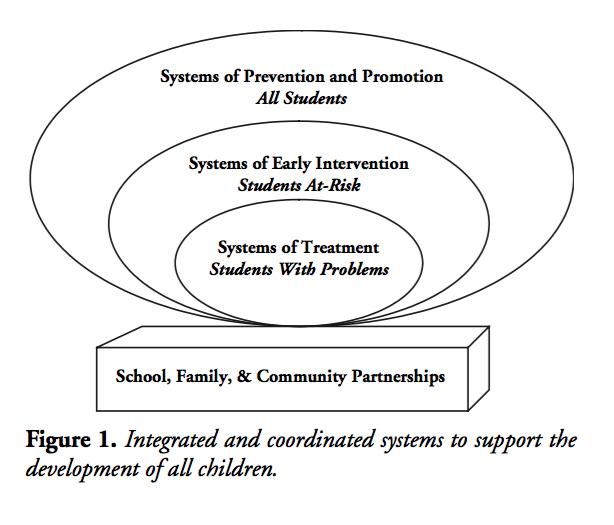Many schools see the value of teaching social and emotional skills so that their students will succeed in their personal and academic lives.
Although there are a variety of ways to promote this type of well-being, many federal, state, and local education agencies mandate that schools implement programs based on the social and emotional learning framework.
 Graphical image courtesy of Casel.org
Graphical image courtesy of Casel.org
The social emotional learning framework (SELF) identifies five crucial skills and attitudes based on research, theory, and best educational practices to guide selection of research-based prevention programs that address health, substance abuse, violence prevention, sexuality, character, and social skills (Payton et al., 2000). Put differently, prevention programs may be effective if they engage these crucial skills and attitudes (Durlak et al., 2011). These crucial skills and attitudes are: self-management, self-awareness, responsible decision-making, relationship skills, and social awareness. Some articulations suggest a sequential order—that self-management and awareness precede responsible decision-making, and that responsible decision making precedes development of relationship skills and social awareness (Payton et al., 2000). They also acknowledge that the five skills inter-relate and mutually reinforce one another (Payton et al., 2000). Others suggest a variety of structures to support effective delivery of social and emotional learning (Zins & Elias, 2007).
Graphical image courtesy of Journal of Educational and Psychological Consultation
Taken together, this framework combines a core set of social skills with a recommendation for a set of supporting structures.
Despite this evidence base and set of recommendations, a few fundamental problems persist:
1.) There are many programs that profess to successfully teach social and emotional skills and attitudes; few have evidence that suggest they are successful (that is not to say that all are ineffective—the complexity of measuring a generalized “success” likely contributes to this dearth of evidence).
2.) Typical implementation of SELF involves units of lessons. There aren’t explicit motivating structures to use these skills throughout the day in all situations. Moreover, these lessons tend not to be so detailed as to teach social skills to be used in all everyday communication and provide guidance for implementing a supportive structure the matches the complexity of an entire school system.
3.) Some education agencies mandate that their constituent schools implement SELF with little guidance. This may be because of the complexities inherent in implementing a program across a district. It may also be because they don’t have the organizational capacity to handle a potentially complex implementation structure of school-wide programs and practices.
4.) SELF programs consume a lot of resources, yet seemingly don’t have tools to work with a broad array of challenges that schools face, including staff conflicts, elucidating the sources of problems that are not related to social and emotional needs, and behavioral structures to reintegrate students into a group after they’ve caused harm.
I posit that restorative practices (RPS), used in combination with nonviolent communication (NVC), seems to be a more comprehensive set of skills and structures that accomplish the goals of the SELF and addresses the aforementioned problems. To clarify, I suggest that SELF and RPS (with NVC) complement one another.
NVC represents a body of concrete skills which frame learning of self-management and self-awareness. It structures negotiation between parties for responsible decision-making and structures relationship skills. It raises social awareness through communicating the personal experiences of involved parties.
RPS can involves tiered and targeted intervention, is fundamentally prevention-oriented, and embodies many of the best practices for implementation.In practice, students might employ NVC to discuss, practice, and internalize SELF concepts. And, schools might use RPS to create successful structures in which this learning can thrive.
In closing, the theory and evidence behind RPS is still forming because RPS are extremely complex; yet, the theory and evidence behind SELF is very clear because SELF is more refined and targets specific behaviors. Together, I think they make a more effective set of tools to promote students’ success in their personal and academic lives.








